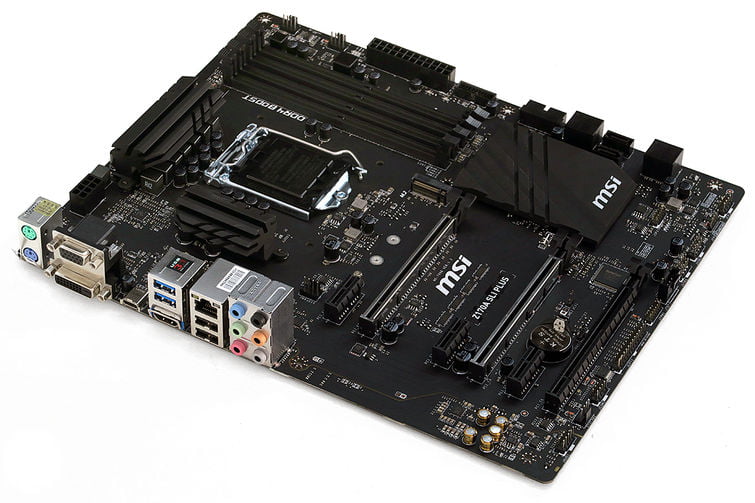
Designed to deliver full gaming performance at reduced cost, the Z170A SLI Plus arrives with MSI’s hope for a value award. Today, we put the ATX motherboard to the test.
Every enthusiast motherboard priced under $140 muddies the water a little more for those who think a product must fit within a well-defined class. The conversation begins with Intel labeling its LGA 1151 socket as mainstream, and then producing enthusiast processors and chipsets for that so-called mainstream platform. While it’s easy for us to ignore the mainstream label when reviewing motherboards that cost over $140, cheaper boards that are barely above mainstream pricing and include enthusiast features are a little harder to classify. Meet the Z170A SLI Plus.

Contents
Specifications
MORE: Best Motherboards
MORE: How To Choose A Motherboard
MORE: All Motherboard Content
Features
MSI calls this a Pro Series product, yet it appears to be designed exclusively for gamers. Perhaps the firm is going after the idea of professional gaming? The least-expensive SLI-enabled Z170 motherboard we’ve tested, MSI’s Z170A SLI Plus is equipped with a pair of PS/2 ports, a VGA connector, and an HDMI output that can only reach 4k at a mere 24Hz. Then again, gamers would only use onboard video for diagnostics, and some might be using an old PS/2 mouse and clicky keyboard. At least MSI was generous enough to include a Type C USB 3.1 connector.
The generosity doesn’t really stop there either, as the Z170A SLI Plus boosts its Gigabit Ethernet port with Intel’s gamer-friendly i219V network PHY, and uses Realtek’s high-end ALC1150 audio codec. MSI even advertises an electrically isolated pathway for its audio pathways, Chemi-Con audio capacitors, a full 7.1-channel analog output set, and a separate channel for the headphones.

MSI also leaves the PCIe 3.0 x4 M.2 interface available, knowing that many gamers want to build their systems without drive cables. MSI doesn’t spend any extra money making it switchable to SATA, however.
In fact, the only switching extravagance we find is the one needed to enable SLI. Four two-pathway switches are lined up between the two metal-covered PCIe x16 slots to allow x16-x0 to x8-x8 mode changes, which happen automatically whenever a card is detected in the second slot. The third x16-length slot is wired as x4 through the PCH, which makes it incompatible with SLI (though 3-way CrossFireX is still an option).
Three PCIe x1 slots are also open-ended to accept longer cards, though the lowest x1 slot is boxed in by the clock battery.
We didn’t see many USB 3.0 ports on the I/O panel, but MSI makes more available to the front panel via two dual-port headers. The second header is adjacent to the upper SATA ports and faces forward to slip its cable connector under the end of a long graphics card.
A pair of CPU fan headers are found in front and behind the upper DIMM latches and controlled as a pair. MSI also includes a rear fan header forward of the I/O panel audio jacks, a front-panel fan header above the main power connector, and a bottom fan connector next to the bottom-rear-corner jack for front-panel audio cables. That audio header appears to be the most concerning placement from a builder’s perspective, though most cases now have extra-long cables to reach that position.
[SOURCE:-tomshardware]
